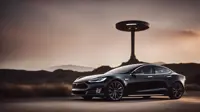India to overtake US as world’s biggest importer of infrastructure goods: Report
09 Oct 2013
India is expected to overtake the US as the world's biggest importer of infrastructure goods from 2020 till 2030.
A report by HSBC said the demand for materials needed for infrastructure projects like metals, minerals, buildings and transport equipment was expected to rise in the country, as it invested in building its civil infrastructure.
The US, which is currently the biggest importer of infrastructure-related goods, would be overtaken by India around 2020, with India becoming the lead importer of such goods as it invested in building its domestic networks and was expected to remain at the top of the chart till 2030, the report said.
At present, the US topped the list of countries importing infrastructure goods, followed by India, Hong Kong, China and Germany.
By 2020, this was likely undergo a sea-change, with India toppling the US to become the largest importer of infrastructure related goods followed by the US in the second place and China, Hong Kong and Korea making it to the top five.
Meanwhile, China was set to emerge as the top importer of investment equipment (machinery required by businesses to boost production) by 2030 as it continued to invest in manufacturing productivity.
The HSBC's latest Trade Forecast report, has special focus on infrastructure. It finds growing Asian economies would take an increasing share of infrastructure-related imports over time, with Malaysia, Korea and Vietnam moving up the rankings.
Apart from the US, Mexico was the top ranking non-Asian importer of total infrastructure goods, ahead of Brazil.
The report further adds, that trade in investment equipment would increase more rapidly than trade in goods for infrastructure in the years to 2030, partly due to the pivot in China's economic focus towards consumer led growth and next generation technology.
The report projected the most rapid growth in merchandise trade in the decade to 2030 would be led by India, China and Vietnam at an average of over 10 per cent a year.
The report said that between 2013 and 2030, infrastructure-related global trade would increase at an average of 9 per cent annually, as against GDP growth of an average of just below 4 per cent and world merchandise trade at an average 4.5 per cent.
Meanwhile, international businesses around the world were reporting increased confidence in global trade prospects with the HSBC Trade Confidence Index increasing to 112, up one point.
According to the forecast, world trade would grow at a modest pace to 2015 before accelerating between 2016 and 2020.



.webp)
.webp)

.webp)
.webp)

























